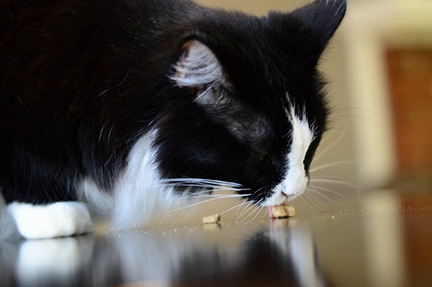
Is your cat one who’s never met a treat she didn’t love? Does she meow at the mere sound of a bag crackling, shaking or opening? Does she salivate at the scents wafting her way? Does she purr in anticipation of a tasty dream about to come true?
Then yours is a kitty cat “treat-aholic.” Although some caring cat guardians are guilt stricken at the thought of depriving their cats of the treats they crave, the consequences of constantly caving are, in fact, detrimental to their health and wellbeing.
Feline obesity, like human obesity, is a condition that can’t be dismissed with a wave of the terms “big boned” or “husky”. Overweight, is simply that: overweight. And it’s caused, quite simply, by consuming more calories than are burned. And so, as with people, pets must ingest fewer calories and focus more on burning them.
According to most experts, a HIGH QUALITY cat food should comprise 90% of a cat’s diet, with treats comprising the remaining 10%. Those treats, meted out in moderation, should be tailored especially for YOUR cat or after seeking the advice of your vet. Because, as with everything else in today’s competitive market – be it for people or pets -- there are treats touted not only for every palate, but for every problem as well.
Most cats crave catnip and “cat grass” (a cereal grass such as wheat or oats), which are easily grown in a sunny window or bought both dried and fresh at a pet store.
Bonita tuna flakes, a favorite of felines, are low in fat and high in protein, feathery light, sinfully smelly, and oh-so-easy to eat. Again in moderation! If, however, your cat has ever suffered from urinary tract infections, either omit this treat altogether or provide her with only the occasional tasty flake. For the home cook, prepare your own treats by cooking small bits of liver, fish or eggs -- whether ordinary or certified organic. For the non-cook, there are freeze-dried treats made from chicken or meat, which are not only healthy and tasty, but are excellent for cats suffering from food allergies.
Coupled, of course, with a reduction in your cat’s caloric intake is an elevation in her exercise time. There’s no better substitute for snacking than loving, and you can prove to your precious puss just how much you love her by interacting with her more often and for longer periods of time on a daily basis. From rods with flying feathers and poles with dangling fish to laser light beams and tossed crunchy balls, the name of the game is movement. And paw-lenty of it.
But the key to success is remaining steadfast in the face of lengthy kitty hissy fits and heart wrenchingly piteous meows, persistent paw banging on cabinet doors and repeated efforts to “knead” you into submission. If overeating is detrimental to your health, “over treating” is just as detrimental to your cat’s health. Hence the word “treat” – given on occasion to make that occasion special.
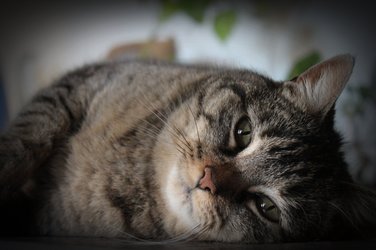
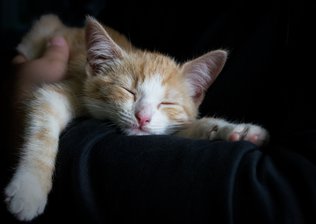
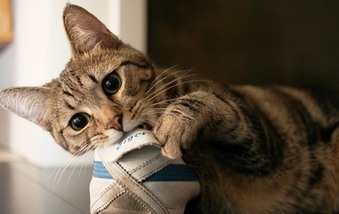
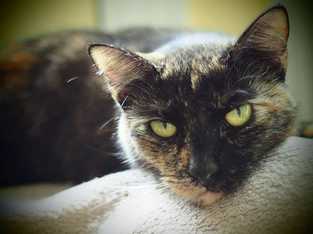









 RSS Feed
RSS Feed